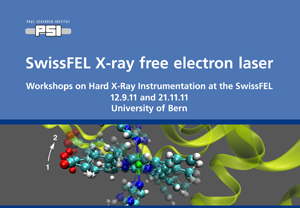Speaker
Bill Pedrini
(PSI)
Description
Authors: Ching-Ju Tsai1, Bill Pedrini2, Cameron M. Kewish3, Bruce D. Patterson2, Rafael Abela2, Gebhard Schertler1, Xiao-Dan Li1
1Laboratory of Biomolecular Research and 2SwissFEL Project, Paul Scherrer Institute, 5232 Villigen PSI, Switzerland
3Synchrotron Soleil, L’ Orme des Merisiers, BP 48 Saint Aubin, 91192 Gif-sur-Yvette cedex, France
Abstract:
Most of the known protein structures have been determined by synchrotron source X-ray crystallography, which requires macroscopic crystals of larger than 1m in size to overcome radiation damage and achieve subnanometer resolution. Obtaining well-ordered crystals of such size can be challenging, time-consuming, expensive and in many cases impossible. Three dimensional (3D) nanocrystals and two-dimensional (2D) crystals of membrane proteins can be obtained, which are an important class of drug targets. However, such samples do not provide sufficient signal intensity in synchrotron experiments. With the advent of Free Electron Lasers (FELs), it has become possible to collect a large number of diffraction images from many samples in the so called "diffract and destroy mode". Chapman and collaborators [1] have shown first results using Photosystem I 3D nanocrystals, which were injected into the X-ray beam with a liquid mother liquor jet. Here we discuss a similar experiment using micrometer sized 2D membrane protein crystals. Sample refreshing is achieved by scanning the sample to diffract the incoming X-ray beam at a different, undamaged position each time. The main issues for the experiment are the positioning of the sample at a scale smaller than the typical size of a crystal, and a sufficient incoming X-ray photon flux, as is always the case when the number of diffracting atoms is reduced. It has also been suggested that the full transverse coherence will the 2D crystallographic phase problem to be solved iteratively [2], for which the achievement of a submicrometer focus will be of critical importance.
[1] H. N. Chapman et al., Nature 470, 73-78 (2011)
[2] C. M. Kewish et al., New J. Phys 12, 035005 (2010)
Author
Bill Pedrini
(PSI)

